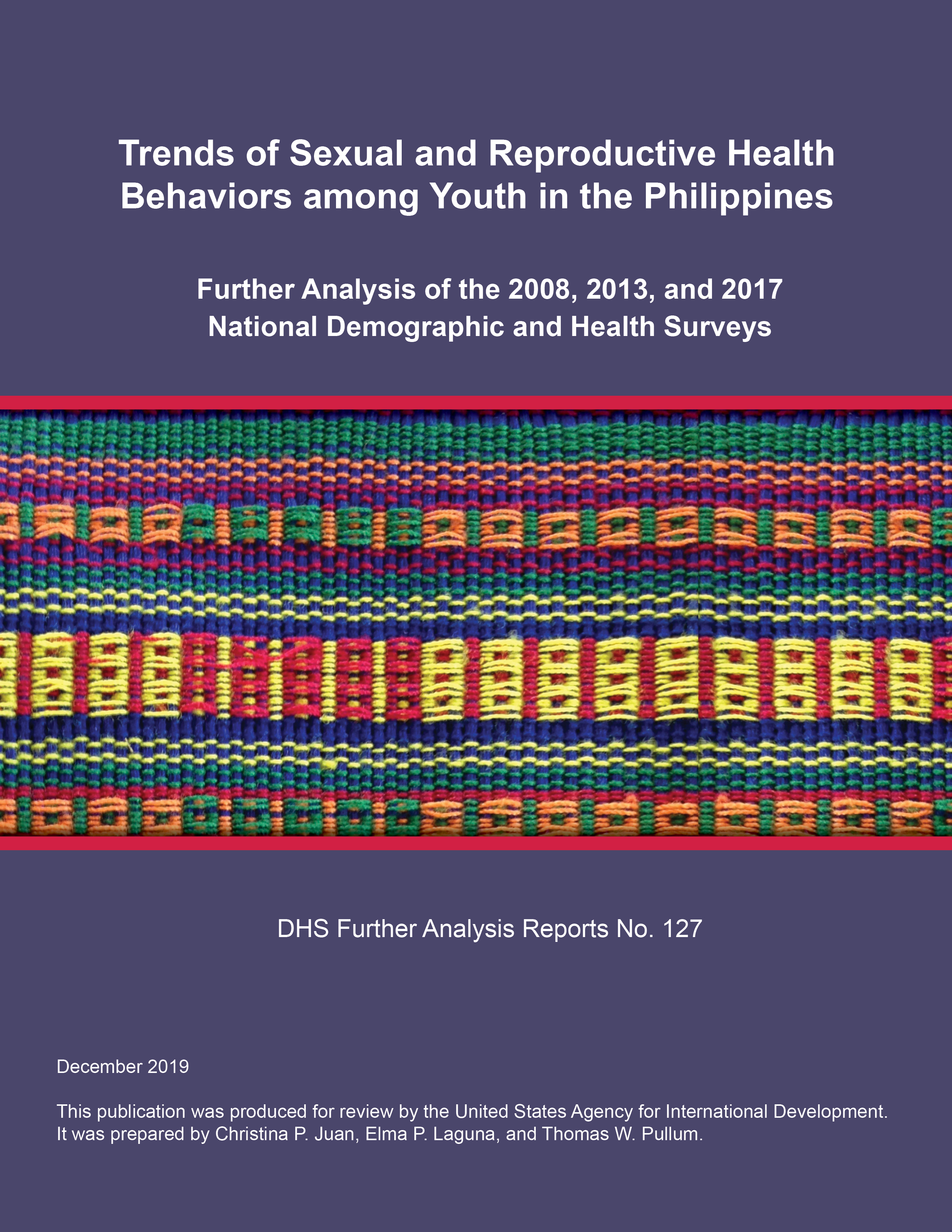There is no printed copy available to order.
Abstract:
This report examines the trends of sexual and reproductive health behavior over a 9-year period (2008-2017) in the Philippines. The analysis utilizes data from three nationally representative household surveys conducted by The Demographic and Health Surveys Program in 2008, 2013, and 2017. We carried out an analysis of estimates of health indicators related to sexual behavior and knowledge, fertility intentions, pregnancy, maternal health care, contraceptive method use, health facility visits for family planning, demand for family planning satisfied by modern methods, and experiences of marital control and spousal violence. We analyzed indicators by sociodemographic characteristics and examined the changes of these estimates among Filipino women age 15-24 compared with estimates among women age 15-49. Our results illustrate increases in young women’s use of health facilities, including 4+ antenatal care visits; delivering children in facilities; accessing postnatal care within the first 2 days of delivery; and receiving contraceptive methods in the public facilities. Knowledge and exposure to sexual and reproductive health information are inconsistent, while correct knowledge of their fertile period has decreased. The prevalence of pregnancies and births among youth is declining, albeit slowly.
The report also examines levels and trends at the subnational level by using four types of fertility rates and four indicators. The fertility rates are the total fertility rate and the age-specific fertility rate for ages 15-24, 15-19, and 20-24. The indicators are the percentages of young women (age 15-24, 15-19, or 20-24) who are in a union, or ever gave birth, or are current users of a modern method of contraception, or whose demand for family planning is being satisfied with a modern method. Our report examines trends in these outcomes at the national level and within the 17 regions of the Philippines over the 9-year period. The report then focuses on the levels of the four indicators in the 87 provinces of the Philippines, using the 2017 survey. Provinces with relatively high levels of unions and fertility, but relatively low levels of contraceptive use and demand satisfied, are identified.
Overall, the trends of sexual and reproductive health behavior among women age 15-24 in the Philippines indicate that targeted programs and policies are essential. Young women’s knowledge and autonomy, which could be related to the decline in exposure to effective family planning messaging, lower levels of shared family planning decision-making, and increased experiences of marital control need to be further examined.
 Trends of Sexual and Reproductive Health Behaviors among Youth in the Philippines (PDF, 3581K)
Trends of Sexual and Reproductive Health Behaviors among Youth in the Philippines (PDF, 3581K)
